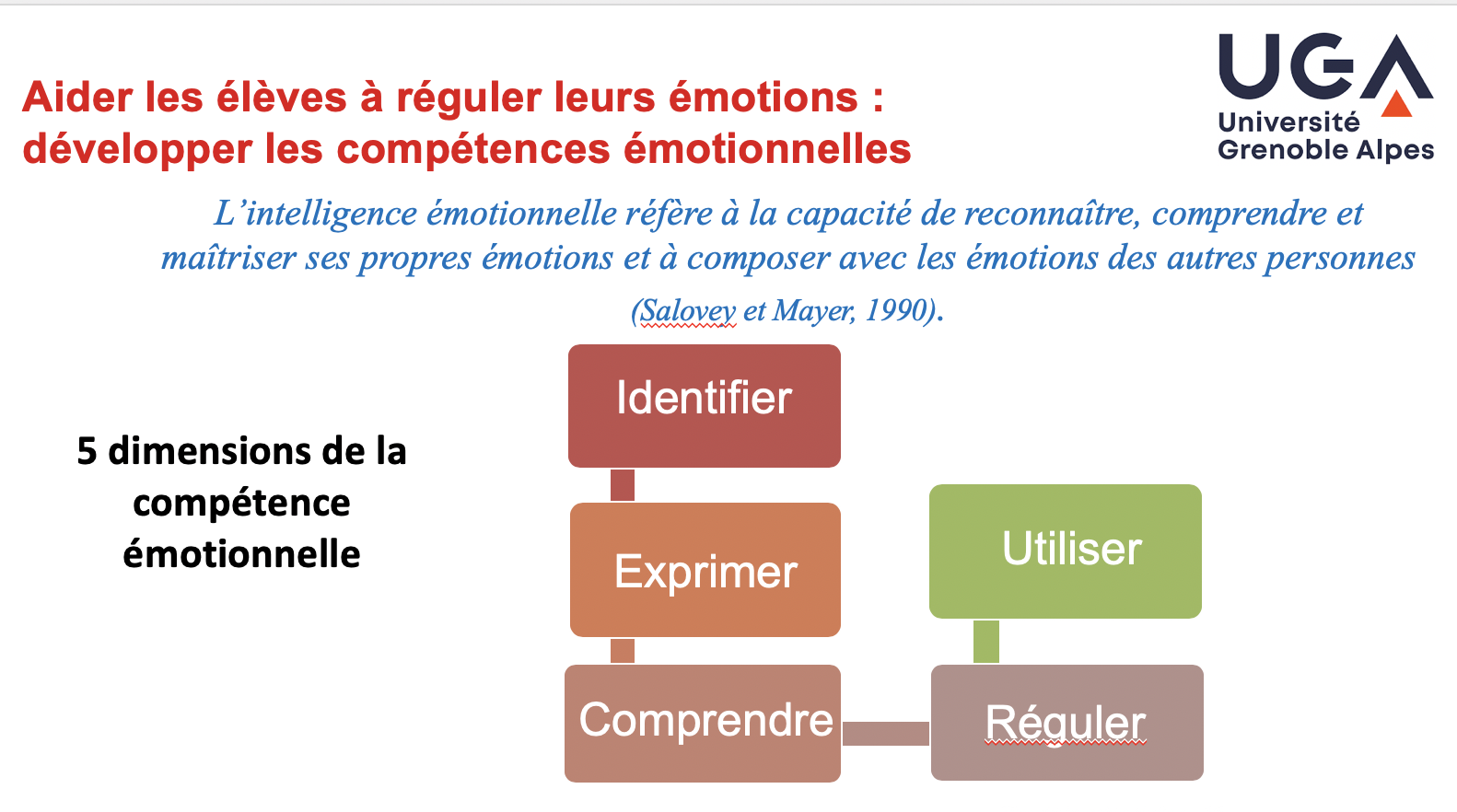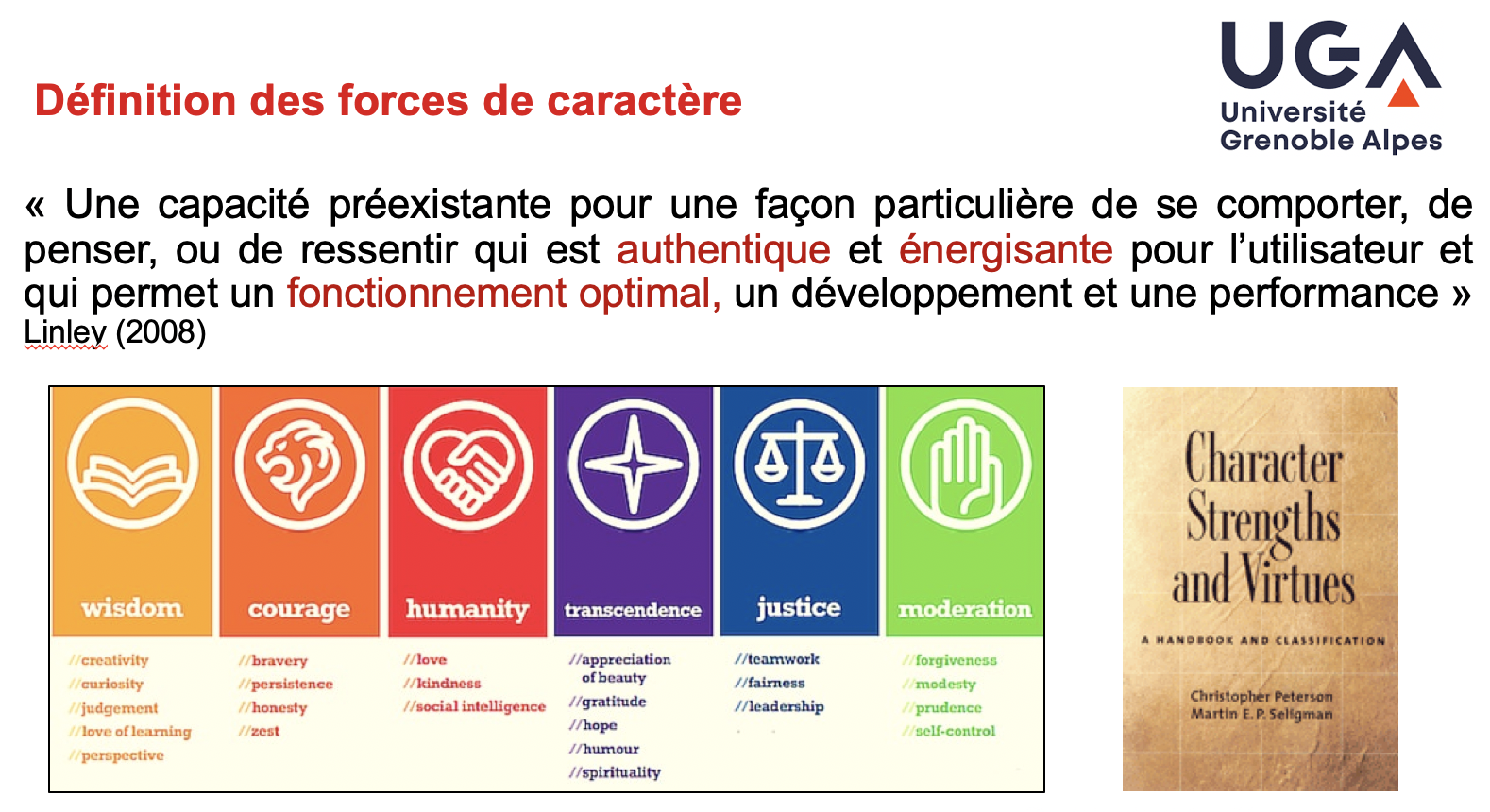- Share
- Share on Facebook
- Share on X
- Share on LinkedIn

Conceptual tool: Emotional skills
The presentation of the Emotional Competencies Model (Mikolajczak, Quoidbach, Kotsou, & Nelis, 2009) helps mark out the different stages of classroom intervention. The first step is to help students identify different forms of emotions, first off-center (i.e., those of others), then their own. The second step is to work on the expression of emotions by enriching the emotional vocabulary. The understanding of emotions is the third step which allows highlighting the tendencies to action associated with the different emotions.
Several types of interventions have been experimented with in school to foster the development of emotional skills: attentive presence, character strengths, grateful orientation, cooperative practices (for a review, see Shankland and Rosset, 2016). Depending on the teacher's objectives, these practices can address any one of the emotional competencies. Below is a practice of attentive presence (stop - feel - go) and the definition of character strengths (for other practices, see the social plus site).
Practical tool: Attentive presence (the STOP - FEEL - GO)
The "stop - feel - go" is a practice of attentive presence:
- the stop: stopping talking, working, etc.
- the feel: to feel what is happening in your body, the sensations that are there, the emotions that I can perceive.
- the go: act after having taken the time to become aware of the situation.
Practical tool: strengths of character
Every individual has a force profile - 3 to 5 dominant forces called signature forces - whose knowledge gives access to positive mastery experiences. The practice of the forces allows:
1. At the individual level, to improve self-confidence
a) by counterbalancing our tendency to essentially see what is wrong,
b) by promoting self-knowledge to develop motivation and commitment
- Share
- Share on Facebook
- Share on X
- Share on LinkedIn


